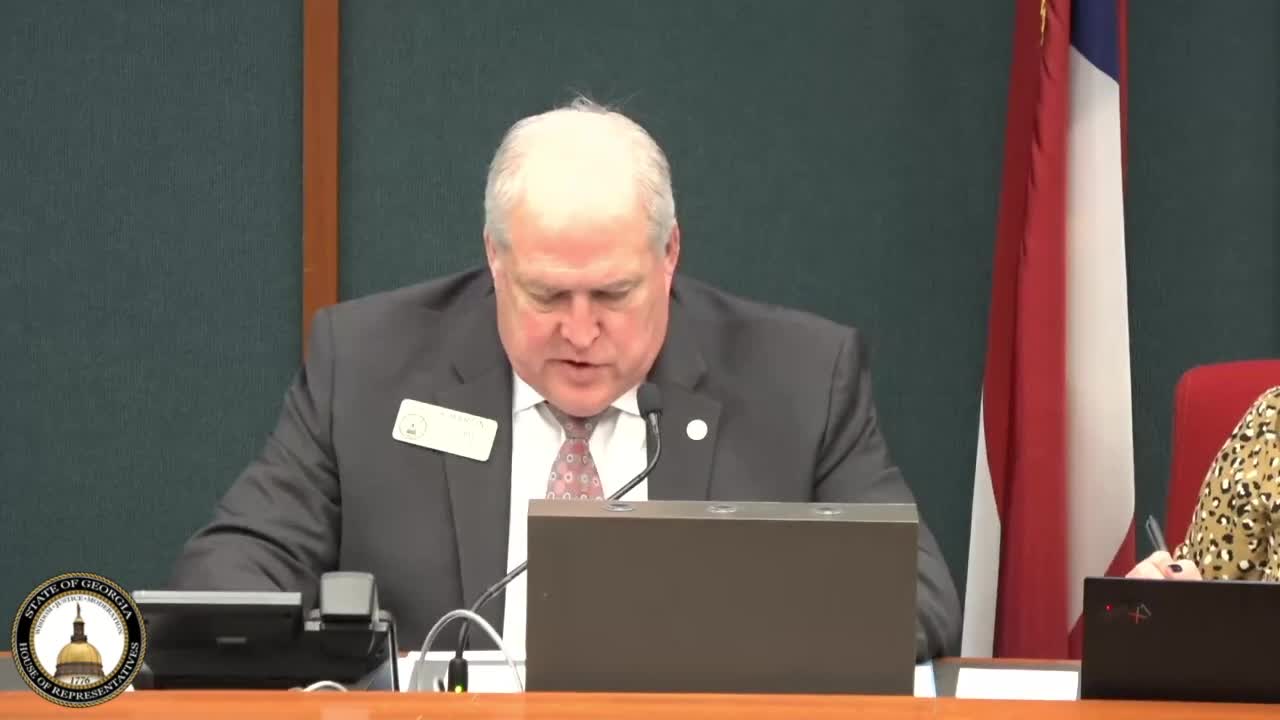Georgia's dual enrollment program sees 20% increase in student participation post-pandemic
February 19, 2025 | 2025 Legislature Georgia , Georgia
This article was created by AI summarizing key points discussed. AI makes mistakes, so for full details and context, please refer to the video of the full meeting. Please report any errors so we can fix them. Report an error »

The Georgia State Legislature convened on February 19, 2025, to discuss the dual enrollment program, a significant initiative that allows high school students to take college courses. The meeting began with an overview of the program's growth and its impact on student enrollment and performance.
President Riley presented highlights from the Georgia Student Finance Commission's annual report on dual enrollment, covering the years 2016 to 2024. The report indicated an 84% increase in expenditures since fiscal year 2016, with a notable rise in student participation following the pandemic. In the 2023-2024 academic year, there was a 20% increase in the number of students enrolled in dual enrollment courses, with 57% attending Technical College System of Georgia (TCSG) institutions, 37% at University System of Georgia (USG) schools, and 16% at private institutions. Core courses, including English, math, and science, comprised 80% of the classes taken.
Riley emphasized that 70% of dual enrollment students enroll in a HOPE-eligible post-secondary institution within one year of high school graduation, highlighting the program's effectiveness in retaining students in Georgia's educational system. The report also noted that 60% of dual enrollment students graduate high school with a HOPE GPA, and 86% persist into their second year of college.
The discussion then shifted to the application process for dual enrollment, which requires students to meet specific eligibility criteria, including enrollment in a participating high school and parental approval. The process involves multiple steps, including applications to both the high school and the post-secondary institution.
Legislators raised questions about the program's funding structure, noting that the state pays for dual enrollment in multiple ways, including funding for the high school and tuition for the college courses. Concerns were expressed about the financial implications of allowing out-of-state students to participate in the program, with some legislators questioning whether this practice was sustainable.
The meeting concluded with a consensus on the importance of dual enrollment in providing students with early exposure to higher education and the potential for cost savings through accelerated degree completion. President Riley offered to provide further data on student performance and the program's impact in future discussions.
Overall, the meeting underscored the dual enrollment program's role in enhancing educational opportunities for Georgia's high school students while also addressing the financial complexities associated with its funding.
President Riley presented highlights from the Georgia Student Finance Commission's annual report on dual enrollment, covering the years 2016 to 2024. The report indicated an 84% increase in expenditures since fiscal year 2016, with a notable rise in student participation following the pandemic. In the 2023-2024 academic year, there was a 20% increase in the number of students enrolled in dual enrollment courses, with 57% attending Technical College System of Georgia (TCSG) institutions, 37% at University System of Georgia (USG) schools, and 16% at private institutions. Core courses, including English, math, and science, comprised 80% of the classes taken.
Riley emphasized that 70% of dual enrollment students enroll in a HOPE-eligible post-secondary institution within one year of high school graduation, highlighting the program's effectiveness in retaining students in Georgia's educational system. The report also noted that 60% of dual enrollment students graduate high school with a HOPE GPA, and 86% persist into their second year of college.
The discussion then shifted to the application process for dual enrollment, which requires students to meet specific eligibility criteria, including enrollment in a participating high school and parental approval. The process involves multiple steps, including applications to both the high school and the post-secondary institution.
Legislators raised questions about the program's funding structure, noting that the state pays for dual enrollment in multiple ways, including funding for the high school and tuition for the college courses. Concerns were expressed about the financial implications of allowing out-of-state students to participate in the program, with some legislators questioning whether this practice was sustainable.
The meeting concluded with a consensus on the importance of dual enrollment in providing students with early exposure to higher education and the potential for cost savings through accelerated degree completion. President Riley offered to provide further data on student performance and the program's impact in future discussions.
Overall, the meeting underscored the dual enrollment program's role in enhancing educational opportunities for Georgia's high school students while also addressing the financial complexities associated with its funding.
View full meeting
This article is based on a recent meeting—watch the full video and explore the complete transcript for deeper insights into the discussion.
View full meeting
